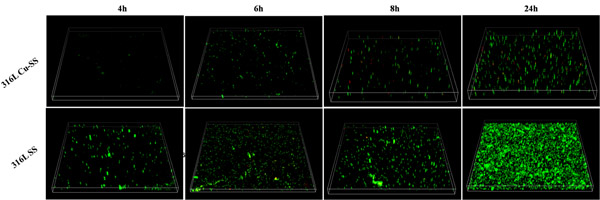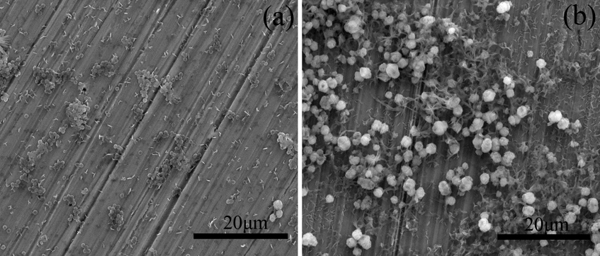The bacterial infection and encrustation of urethral stents are the most common complications in urological diseases treatments, bringing about much burden on patients. The biomaterials research group led by Prof. YANG Ke from the Institute of Metal Research, Chinese Academy of Sciences (IMR, CAS), firstly applied a novel Cu-bearing stainless steel with multi-biofunctions for relieving the ureteral stricture, aiming to reduce the failure of the therapy. Their recent results indicate that the Cu-bearing stainless steel exhibits obvious biofunctions of antibacterial activity, reducing encrustation, promoting endothelialization and inhibiting fibrosis, meanwhile, there is no toxicity, due to the continuous and steady release of Cu ions in the urine.
Based on these unique biofunctions of the Cu-bearing stainless steel, the group has designed a new type of urethral stent, and applied it for a Chinese Patent. The recent results done by ZHAO Jing, a PhD student of Prof. YANG shows that the Cu-bearing stainless steel has a significant inhibitory effect on formation of the biofilms in the urinary system (Fig.1) and greatly reduces the formation of infectious encrustation (Fig.2). In addition, the steel has a selective effect on promoting proliferation and migration of urethral epithelial cells (Fig.3). It also inhibits the urethral scar fibroblasts (Fig.4), while promoting the endothelialization and reducing the restenosis.
This novel Cu-bearing stainless steel with multi-biofunctions is very potential to be used as the implanted materialin urological environment, which may well solve the complications associated with implanted devices.
The study entitled "A novel ureteral stent material with antibacterial and reducing encrustation properties" has been published online in Materials Science and Engineering C.

Fig.1 Live/dead staining of adherent Escherichia Coli on the surfaces of 316L-CuSS and 316LSS after 4, 6, 8 and 24h co-cultures. (Image by IMR)

Fig.2 Crystalline deposits on the surface of samples after incubation with bacteria for 72h: (a) 316L-Cu SS and (b) 316L SS. (Image by IMR)

Fig.3 Migration of urethral epithelial cells (UECs) after incubation with different material extracts for 24h, showing that 316L-Cu SS promotes proliferation of UECs. (Image by IMR)

Fig.4 Migration of urethral scar fibroblasts cells (USFCs) after incubation with different material extracts for 24h, showing that 316L-Cu SS attenuates proliferation of USFCs. (Image by IMR)
Contact:
Prof. YANG Ke
Institute of Metal Research, Chinese Academy of Sciences
72 Wenhua Road, Shenyang 110016, China
E-mail:kyang@imr.ac.cn